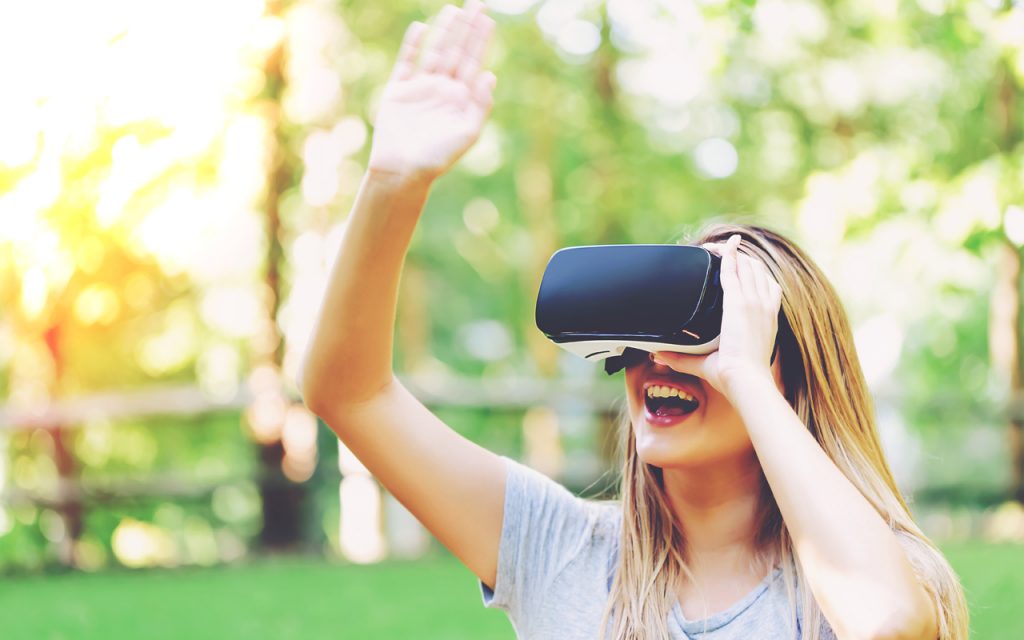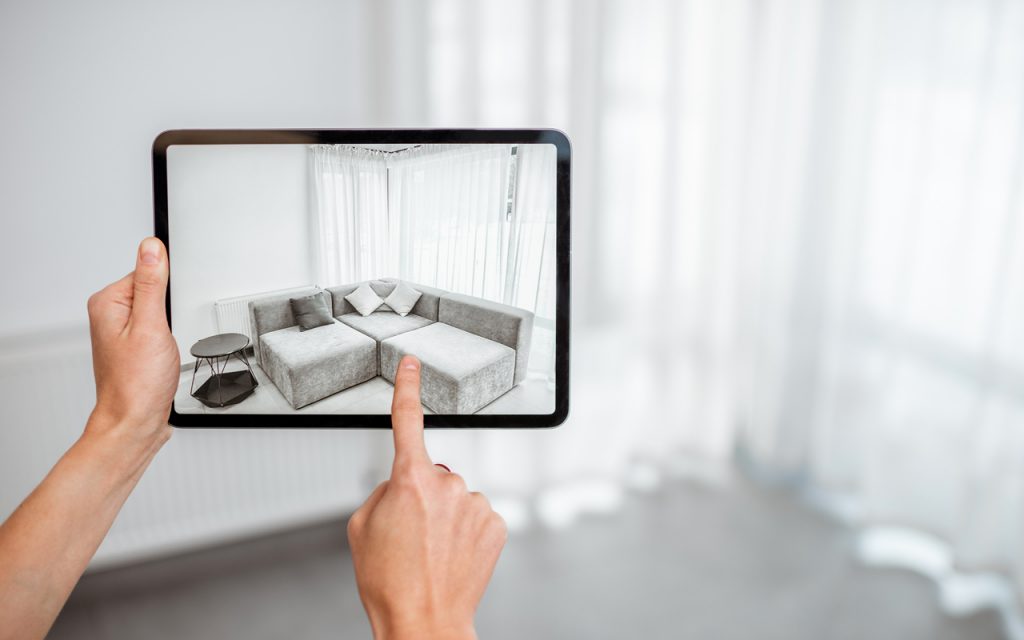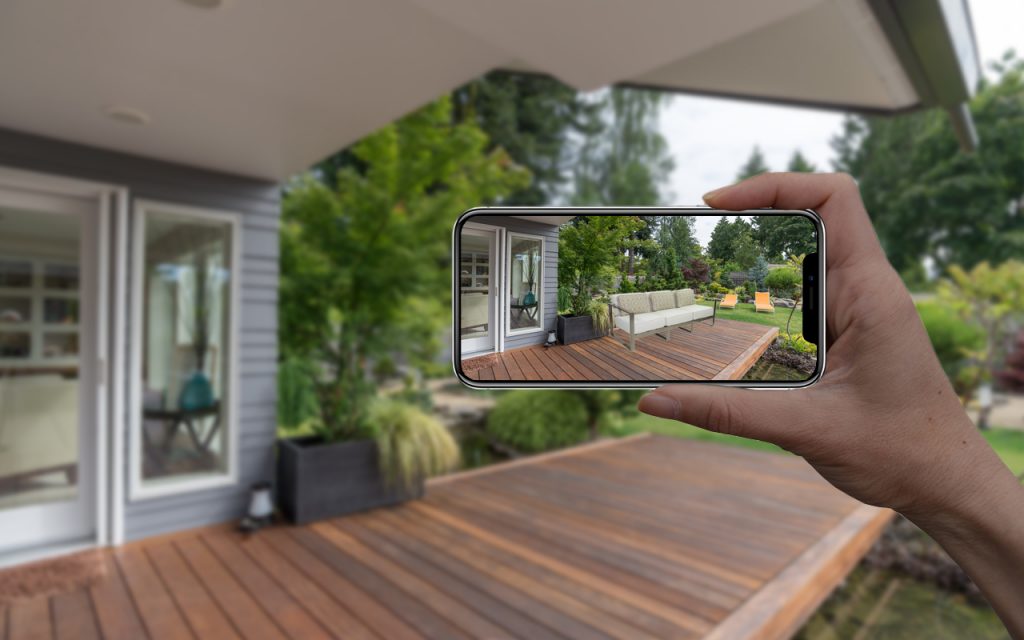
Landscape architects and patio designers may profit from virtual and augmented reality in a variety of ways. Although this technology is primarily used as a tool for a design review in the late stages of the design process, many of the benefits that make these technologies valuable in the later stages of the design suggest that they could be equally valuable in earlier stages.
This article looks at how to include virtual and augmented reality into your home design phases of analysis and idea creation and assess its effects on a large-scale master planning project.
What is Virtual Reality?
The use of computer technology to create a simulated world is known as virtual reality (VR). In contrast to typical user interfaces, virtual reality immerses the user in an experience. Users are immersed and can engage with 3D worlds rather than watching a screen in front of them. The computer is converted into a gatekeeper to this artificial world by mimicking as many senses as possible, including vision, hearing, touch, and even smell. Near-real VR experiences are only limited by the availability of content and low-cost processing power. It’s easy to imagine how home design in VR allows you to see your end result before construction even begins!
A head-mounted display (HMD) is the most instantly recognizable component of Virtual Reality. Humans are visual animals, and the display technology that separates immersive Virtual Reality systems from standard user interfaces is typically the most significant distinction. CAVE automated virtual environments, for example, actively project virtual material into room-sized displays. Consumer and industrial wearables are the wild west, while they’re exciting for folks at colleges and huge labs.
What is Augmented Reality?
Augmented reality (AR) is a technologically augmented or altered representation of the actual world produced via digital visual components, music, or other sensory inputs. Augmented reality is a rising trend among businesses that deal with mobile computing and commercial apps.
One of the augmented reality’s significant aims, amidst the development of data gathering and analysis, is to emphasize certain aspects of the physical environment, enhance knowledge of those qualities, and extract sensible and accessible information used in real-world applications.

Compared to virtual reality, augmented reality has a significant advantage when applied to landscape design: visual immersion. AR applications only appear on your smartphone or tablet screen, and even the HoloLens can only display pictures in a limited area in front of your eyes. Still, VR covers and replaces your field of view. When a hologram vanishes once it moves out of a rectangle in the center of your vision, or you have to gaze at a bit of screen while pretending that the item on that screen is in front of you, it’s not particularly immersive.
What is the Difference Between Virtual and Augmented Reality?
The terms “virtual reality” and “augmented reality” refer to essentially the same thing. Augmented Reality may be thought of as virtual reality with one foot in the real world: Virtual Reality provides an artificial environment to inhabit, whereas Augmented Reality replicates artificial items in the actual world.
The computer determines the position and orientation of a camera in Augmented Reality using sensors and algorithms. AR technology then superimposes the computer-generated pictures over a user’s view of the actual world, rendering the 3D graphics as they look from the camera’s perspective.

The computer in Virtual Reality uses similar sensors and math. Instead of placing a real camera in a physical area, the position of the user’s eyes is set in the simulated world. The visuals respond to the user’s head movement. VR technology produces a realistic, interactive environment for the viewer rather than combining virtual items and a natural scene.
How Designers Are Utilizing Augmented Reality Technology
As competition grows and demand for landscaping services rises, firms must differentiate themselves by utilizing virtual reality and augmented reality technology. Virtual reality and augmented reality take customers on a trip beyond 3D drawings in an industry where your dreams are brought to life via design. This technology lets the consumer take things a step further and see a plan of their patio design come to life.
Companies across the country have taken the plunge into virtual and augmented reality for their lawn and landscape businesses to help bring their vision of landscaping to life. Augmented reality can assist in the vision-planning stage of development. When a customer feels like they’re in their backyard and can look up at the yard and look down at the future, an emotional connection is formed, leading to higher closed contract rates.
Landscape architects who are used to rendering farms, outsourced firms where graphic designers produce animated birds or walk-throughs based on their designs may soon discover that many of those companies can also build VR-compatible 3-D models. Designers may use AR technology to modify design aspects, completing the experience-compare-edit cycle directly.
Another advantage of VR and AR in design visualization is that it allows for simultaneous comparison of multiple concepts. Designers and clients can, for example, explore and engage with numerous virtual places in 3D interactive virtual environments. They can also turn the data into a simulation and change the goals as needed in that simulation.
In terms of comprehending the core of a developed style, the use of virtual worlds in landscape design may help their clients. They can make better judgments if they can see the materials that have been placed. Designers can provide that information to a customer clearly and concisely.
Because of its intricacy, AR is particularly well suited to presenting hardscaping projects, particularly in outdoor living areas. Large, sophisticated designs, such as parks and golf courses, and residential landscapes, may be rendered using the program. People may be added to the space to see how it works when it’s busy, and it can be seen in both day and evening situations. By superimposing the render over reality rather than constructing up the area, augmented reality allows you to save time.
Landscape sceneries are more effective thanks to modern technologies. Because AR software and gadgets allow created projects and even locations to be examined faster in reality, it speeds up. It changes the design business, bringing the design process into a more cost-effective stage. Computer graphics, image processing and pattern recognition, intelligent interface technology, voice processing, audio and video technology, network technology, parallel processing technology, and high-performance computer systems combine to produce an immersive virtual environment system. Contrary to common assumptions, creating a virtual reality project does not need specialized knowledge; high-quality software with a VR/AR export option is all you need.
Try The YARD App
YARD is a revolutionary new approach to see and design a client’s future outside the living areas. YARD (Your Augmented Reality Design) is an AR design software that allows users to show their clients a fresh new perspective of their future pool, hardscape, or landscape that is accurate to scale and available to explore in real-time from any angle.
“After more than a decade of working with a pool designer, we’re thrilled to combine the incredible and intuitive power of the best design software with the best and most exciting new technology available today,” shared Structure Studios CEO Noah Nehlich. “YARD gives designers the power to take their clients beyond 3D and place their to-scale future outdoor living space right in front of them, in their yard.”

Show clients exactly what you can offer them. Draw pool designs, hardscapes, and outdoor kitchens when you use YARD’s groundbreaking new technology to move seamlessly between 2D drawings, 3D, and stunning Augmented Reality that you can explore with your client in real-time, from any angle, at an accurate scale.
With thousands of fully realized objects and materials from the extensive Vip3D library — each and every one ready for you to feature directly on your client’s lawn — YARD gives you the power to transform your client’s space in just seconds. The all-new Table Mode brings the great outdoors indoors — all the way to your client’s kitchen table. There is no need to worry about the weather or the lighting, and there is no need to track before you present.
Engage your client with an experience like none other. YARD works seamlessly with your current Vip3D workflow: import pools, hardscapes, outdoor kitchens, and more from Vip3D into YARD, place and rotate them directly onto your client’s property, and then walk around your scaled Vip3D designs, as easy to explore as if the project were already complete.
As you walk around with your client and explore their property with an iPad Pro in hand, YARD will automatically use the tablet’s camera to determine the scale. The scale is typically accurate to within just a few inches; if necessary, you have the freedom to adjust the size and scale of your home designs.
Designers may quickly draw short concepts in 3D on an iPad Pro while visiting a client’s house. They may place design components directly onto the property, giving clients a clear sense of size and allowing them to resolve issues or concerns in real-time. YARD empowers the customer to investigate every aspect of the design from any perspective.
For fine patio furniture in Arizona, come visit our All American Outdoor Living showroom today!
